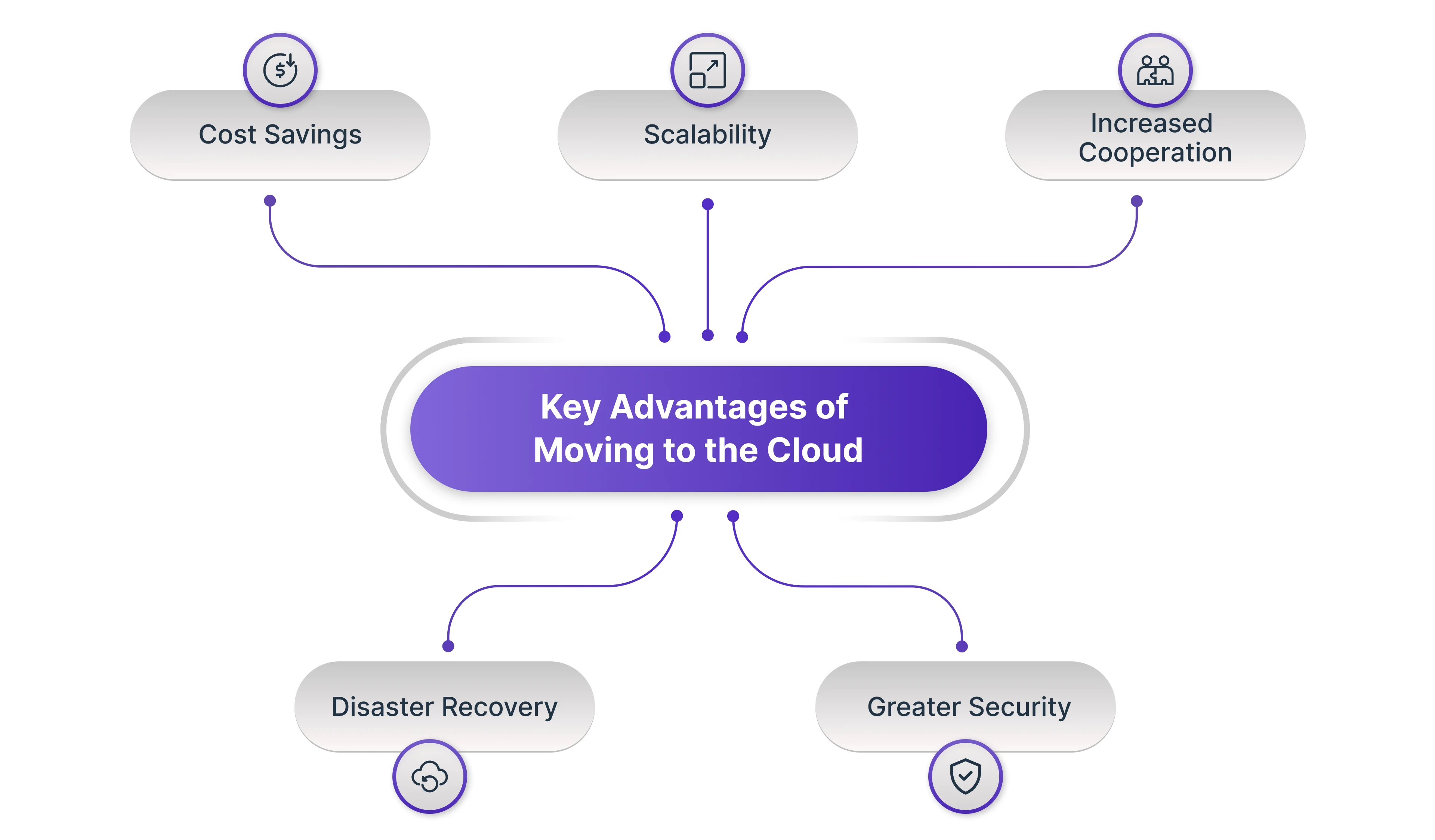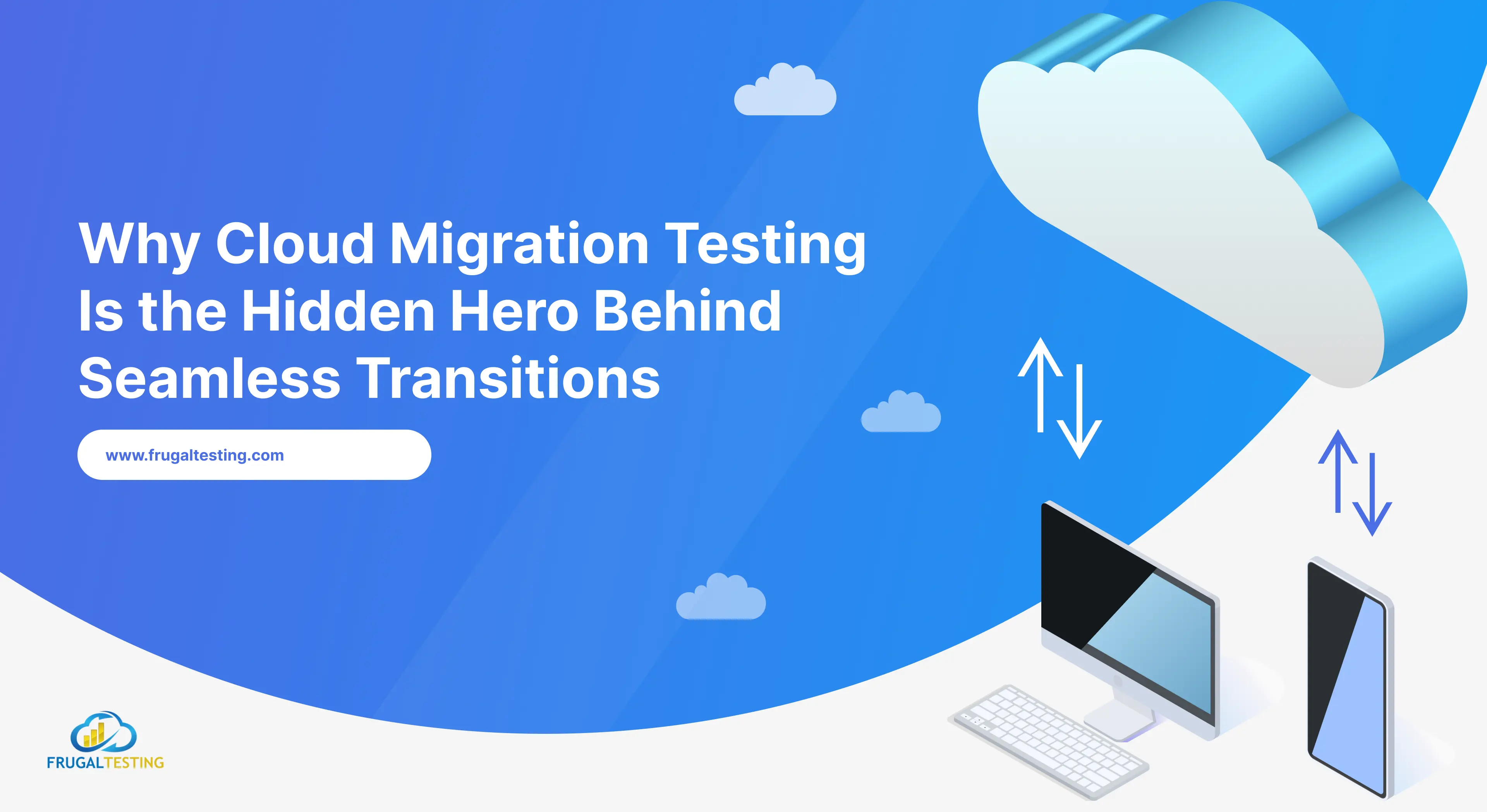Why Cloud Migration Consultants Trust QA to Make a Smooth Transition
Companies across industries continue shifting to the cloud to modernize operations, improve scalability, and support long-term business goals through cloud services, advanced cloud infrastructure, and modern cloud migration services. While cloud technology offers clear advantages, the journey to a cloud environment can involve risks, unpredictable dependencies, and technical challenges, especially during data migration across platforms such as Amazon Web Services. This is why expert cloud migration consultants play a crucial role in guiding organizations through every stage of the migration lifecycle with clarity and precision.
At Frugal Testing, our team has observed that Quality Assurance (QA) is one of the most critical components of every successful migration strategy. QA acts as the safety layer that verifies stability, performance, functional accuracy, and security throughout the migration process. This blog explains why cloud migration consultants rely so strongly on QA and how structured testing ensures seamless transitions without disruption.

Before diving deeper, this blog will explore five key areas that shape a successful cloud migration journey and explain why QA plays such a crucial role at every stage:
- Understanding Cloud Migration - What cloud migration means, different cloud models, and why organizations shift from on-premise systems to modern cloud infrastructure.
- Key Advantages of Moving to the Cloud - The business, operational, and technical benefits that drive companies toward cloud services.
- Current Trends Influencing Cloud Migration - Multi-cloud adoption, automation, sustainability, and evolving cloud security requirements.
- The Role of Cloud Migration Consultants - How consultants plan, execute, and optimize the migration lifecycle while reducing risks.
- Why Quality Assurance Is Critical to Cloud Migration - How QA ensures stability, performance, security, and a seamless end-user experience during and after the transition.
Understanding Cloud Migration
What is cloud migration?
Cloud migration refers to the movement of applications, databases, workloads, storage systems, and other digital assets from on-prem infrastructure to cloud platforms. The goal is to improve agility, reduce dependency on physical hardware, and create scalable, cost-effective systems.
The migration process can involve several models:
- Public Cloud: These are cloud platforms managed by external providers. Businesses share infrastructure but maintain logical separation.
- Private Cloud: Organizations operate dedicated environments with greater control, customized security, and isolation.
- Hybrid Cloud: This combines public and private cloud setups, allowing businesses to distribute workloads based on performance needs, cost, compliance, or security conditions.
A migration strategy must align with business objectives, technical requirements, and long-term digital transformation plans. Cloud migration consulting teams help assess systems, define the roadmap, and coordinate the transition with minimal disruption.
Key Advantages of Moving to the Cloud

Current Trends in Cloud Migration
Cloud migration trends continue evolving rapidly. Some of the most prominent ones include:
Growing Multi-Cloud Adoption: Organizations increasingly use more than one cloud provider to avoid vendor lock-in, improve resilience, and optimize performance.
Automation and Intelligent Tools: Automated frameworks reduce manual tasks, improve accuracy, and support continuous testing.
Sustainability Priorities: Companies are choosing data centers and providers with greener operations to meet sustainability goals.
Advanced Security Focus: With cyberattacks and evolving compliance checks, security assessments, and ongoing monitoring are essential throughout migration.
Hybrid Models Becoming Standard: Many enterprises are combining public cloud and private cloud systems to balance control and flexibility.
Cloud migration consultants must stay updated on these patterns to help businesses choose the right platforms and tools.
The Role of Cloud Migration Consultants
What Cloud Migration Consultants Do
Cloud migration consultants are specialists who guide organizations through the planning, execution, and optimization of their cloud migration initiatives. Their responsibilities include:
- Assessing existing systems and identifying what can be migrated
- Selecting appropriate cloud platforms
- Creating migration strategies
- Managing technical complexities
- Ensuring security and compliance
- Providing training to internal teams
Their expertise helps organizations move confidently into cloud environments without facing unexpected challenges.
How Consultants Guide the Migration Journey
Consultants work across multiple stages of the migration lifecycle, ensuring a controlled and predictable transformation. Their responsibilities typically include:
Evaluating Current Infrastructure: Consultants conduct a detailed assessment to determine which workloads, applications, and systems should be migrated and how.
Developing Cloud Migration Strategy: They design step-by-step migration strategies that align with business goals, risks, compliance needs, and customer expectations.
Coordinating the Migration Process: Consultants manage the sequence of activities, testing cycles, dependencies, and deployment stages to reduce downtime.
Installing QA Measures: A strong QA framework ensures all systems function as expected during and after migration.
By coordinating all these aspects, consultants help organizations adopt cloud platforms efficiently and confidently.
Real Migration Success Stories
One strong example of successful cloud migration comes from Balaji Wafers, a well-established FMCG manufacturer highlighted in the external case study. The company modernized its operations by moving critical workloads to the cloud, improving system availability, real-time data access, and overall performance across its production units.
This case demonstrates how expert cloud migration teams—supported by structured QA practices—can streamline complex workloads, reduce operational friction, and help businesses operate with greater efficiency and reliability.
Why Quality Assurance is critical in Cloud Migration?
What does QA mean in cloud migration?
Quality Assurance brings structure and reliability to cloud migration by validating data, checking application behavior, and ensuring every component performs correctly after shifting to the cloud. A strong QA process focuses on core areas such as Data Integrity, Functional Testing, and Performance Testing to make sure nothing breaks, slows down, or gets corrupted during the transition. These checks help prevent issues like broken workflows, unexpected performance drops, or mismatched data once applications move to the new cloud environment.
Without proper QA, organizations risk downtime, inconsistent behavior, migration delays, and costly rollback efforts. This is why cloud migration consultants rely on structured testing to confirm that every workload runs smoothly, meets performance expectations, and stays stable in its new cloud setup.
How does QA ensure a smooth migration?
A strong QA framework helps by catching early problem detection issues long before they reach production or affect users. It validates how applications behave under real cloud workloads and provides cloud performance validation to ensure the new environment can handle expected traffic and processing demands. QA also strengthens security by checking permissions, encryption, and access configurations, supporting improved security compliance before the system goes live.
By integrating QA into every stage of migration, organizations reduce risk, speed up deployment, and maintain a stable, predictable environment after the transition.
QA Tools and Technologies Used in Cloud Migration
Modern cloud migration teams use advanced tools to streamline validation and testing:
- QA automation tools such as Selenium, JMeter, Postman, RestAssured, and TestNG help automate functional, API, and performance testing. These tools speed up test cycles, reduce repetitive manual checks, and improve consistency across environments.
- Cloud monitoring tools like AWS CloudWatch, Azure Monitor, Google Cloud Operations Suite (Stackdriver), Datadog, and New Relic track application performance, latency, resource usage, logs, and security events in real time once workloads go live.
- Testing frameworks, including JUnit, PyTest, Cypress, K6, and reusable CI/CD-driven pipelines, help teams run integration tests, regression tests, and performance testing continuously. These frameworks support structured, repeatable validation—essential during and after migration.
Using this combination of automation, monitoring, and testing frameworks enables consultants to maintain high levels of accuracy, visibility, and efficiency throughout the cloud migration process.

Best Practices for Applying QA During Cloud Migration
Building a Strong QA Strategy
A strong QA strategy sets the foundation for a successful migration. Organizations should define clear goals, map out the validation steps for each phase, and agree on acceptance criteria early. Aligning stakeholders from the start ensures faster decision-making and reduces surprises later in the process. This early structure supports more reliable testing and a smoother cloud transition overall.
Continuous testing throughout migration
Testing should happen continuously, not just at the end. Running tests during every stage provides early problem detection and helps identify performance or functional deviations as workloads move to the cloud. Automated testing shortens feedback cycles, and continuous monitoring supports cloud performance validation by highlighting latency spikes, resource issues, or unexpected behavior in real time. This consistent visibility helps teams maintain stability while the migration is underway.
Essential Post-Migration QA Checks
After the migration is complete, post-deployment validation ensures the environment is production-ready. Teams verify data integrity by checking that all information was transferred accurately, run functional testing to confirm that applications behave as expected, and assess performance testing results to validate real-world responsiveness. Security reviews further support improved security compliance by confirming that access controls, configurations, and encryption settings match required standards. These final checks give organizations confidence that the new cloud environment is stable, secure, and optimized.
Challenges and Solutions in Cloud Migration QA
Common challenges Companies face
Even with strong preparation, teams often face practical hurdles during cloud migration QA:
- Limited visibility during migration – When applications and data shift to the cloud, teams may not have full insight into system behavior. Missing logs, unclear performance patterns, and limited monitoring make it hard to pinpoint issues quickly.
- Integration issues with legacy systems – Older on-prem applications, outdated APIs, or custom-built systems don’t always adapt smoothly to cloud platforms. These compatibility gaps often cause workflow failures, broken connections, or inconsistent performance.
- Resource and skill constraints – Cloud QA requires expertise in automation, data validation, and cloud-native testing. Most teams lack bandwidth or specialized skills, leading to rushed checks and overlooked defects.
Solutions and Mitigation Approaches
Organizations can handle these challenges with a few structured actions:
- Adopt Agile methods – Shorter sprints, frequent testing, and better collaboration help identify defects early and keep the migration process responsive.
- Use specialized QA and monitoring tools – Cloud-native tools support automated testing, real-time alerts, and accurate data validation. This improves visibility and reduces manual effort during migration.
- Invest in targeted training – Building internal cloud and QA skills empowers teams to handle testing confidently, manage post-migration updates, and maintain long-term reliability.
These focused steps help companies execute cloud migrations smoothly while ensuring stability, performance, and user experience remain intact.
Conclusion
Cloud migration is a major milestone in any organization’s digital roadmap, and quality assurance is essential to ensuring a smooth, reliable transition. Cloud migration consultants guide teams through technical, functional, and operational challenges, ensuring that applications are stable, secure, and optimized after migration.
By applying structured QA practices, investing in automation, and following proven migration strategies, businesses can confidently move to the cloud environment and fully realize the benefits of performance, flexibility, and long-term efficiency.
Beyond the technical execution, the true value of QA in cloud migration lies in its ability to uncover hidden dependencies, performance bottlenecks, and integration gaps before they impact end users. As organizations scale their cloud footprint, continuous testing becomes a long-term strategic requirement rather than a one-time activity. By combining consultant expertise with ongoing QA governance, businesses can sustain reliability across new releases, safeguard user experience, and maintain operational continuity as their cloud ecosystem evolves.
FAQs
1. What should organizations evaluate before beginning a cloud migration project?
They should review application complexity, on-prem dependencies, compliance needs, and data sensitivity. This helps define a safe, efficient, and realistic migration plan.
2. Why do cloud migration consultants rely heavily on quality assurance?
QA detects risks early, validates application behavior, and ensures security and stability. This prevents downtime, data issues, and migration failures.
3. How does QA contribute to cloud security during migration?
QA verifies encryption, access controls, configuration accuracy, and compliance requirements. This protects the cloud environment from vulnerabilities during transition.
4. What challenges do companies face when shifting from on-prem systems to a cloud environment?
They often face integration issues, performance inconsistencies, compatibility gaps, and limited cloud-specific monitoring. These can impact migration speed and stability.
5. How can organizations ensure a smooth and stable post-migration experience?
They should run post-migration QA checks, validate data, monitor performance continuously, and optimize configurations. Training internal teams also strengthens long-term reliability.




%201.webp)

